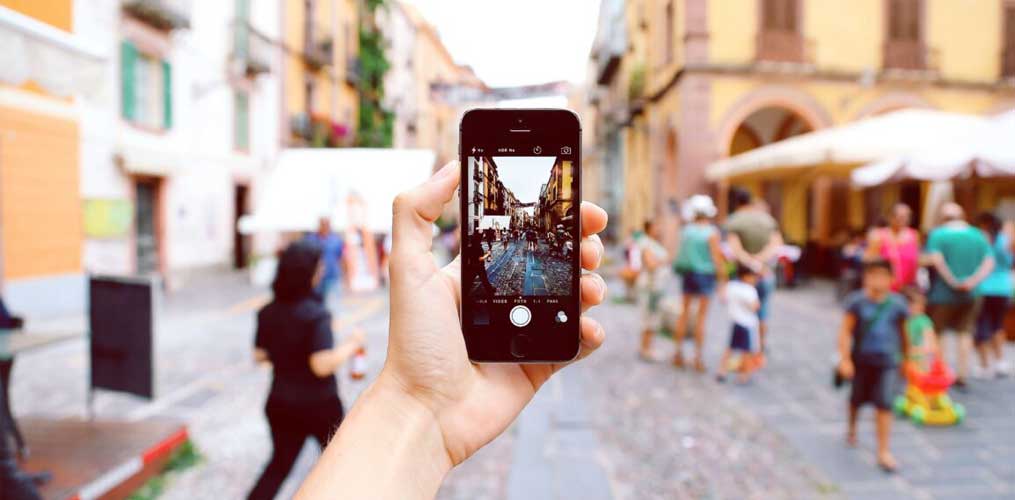Anyone who has seen an Instagram or Facebook profile knows that there is a constant stream of new, interesting, and sometimes bizarre ways to describe oneself. Sometimes it seems like the world has gone crazy with its self-impressions. And yet, each posting that you find on your social media feed says something important about your interests, hobbies, and ideals. Sometimes these posts attract attention from people who want to understand the personality behind the post.
Why does Influencer Marketing connect With Every Age
There is no doubt that influencer marketing has been the strategy of preference for marketers and businesses all across the globe. This trend has been increasing consistently over time with the industry expected to reach $10.24 billion this year. If you are still not convinced about its potential then here are some reasons why influencer marketing will continue to touch new heights in the coming years.
Influencer Marketing is appealingly simple
Marketing via influencers has several advantages over conventional forms of promotion, namely, it is easy to implement and can be customized depending on business goals. Generally all you have to do is find the right fit for your brand or product with an influencer who has a large following, engage them in your marketing activities and watch the results roll in.

Influencer Marketing is appealingly simple
Marketing via influencers has several advantages over conventional forms of promotion, namely, it is easy to implement and can be customized depending on business goals. Generally all you have to do is find the right fit for your brand or product with an influencer who has a large following, engage them in your marketing activities and watch the results roll in.
Influencer Marketing is Time Effective
Influencers are known to have established audiences that trust their choices and words which saves a lot of time for the marketers as they don’t have to spend time building trust among the target audience.

Influencer Marketing is Cost Effective
Influencers are known to cost less than many other conventional forms of promotion, that is advertisements and endorsements, which makes it all the more appealing for brands looking to either increase their market share or simply grab attention of new potential customers with simple messaging without overloading them with their brand messaging.

Influencer Marketing is Customizable
Although there are certain set guidelines for influencer marketing, marketers and brands can go about it in a variety of ways to suit different audiences and business goals by way of selecting the right platform, choosing the most suitable influencers and even adjusting messaging to suit specific audiences.
Influencer Marketing is Inherently Personal
Influencers have a direct connection with their followers, which makes them truly credible to the intended audience and gives influencer marketing that much needed personal touch that essentially makes it more impactful for brands and easier to track as well. It’s like having an extension of your brand right in front of potential customers.
Influencer Marketing is Socially Validated
Most influencers spend a lot of time establishing themselves as experts and talents, which gives them a huge social following as well as influence over their followers who look to the influencer they choose for advice on anything from what they should buy to which party they should go to. Several influencers have become so influential that their endorsements carry a lot of weight for potential customers trying to make the right choices in matters ranging from food taste and ingredients, product purchases, entertainment events, etc.
Adapting Influencer Marketing Strategies Depending on the Age of the Audience
For a more effective influencer marketing outreach, you have to advertise to every generation. When it comes to influencer marketing, the first thing that many brands focus on is getting their target audience’s attention rather than catering to each generation appropriately, which can prove taxing for marketers if they are using conventional methods of promotion that are easily recognizable.
For instance, an influencer marketing campaign that uses hashtags to gather user-generated content is more likely to gain traction with younger audiences compared to baby boomers who are not as plugged in. Similarly, campaigns involving contests and giveaways targeted at the much bigger group of baby boomers will work better for brands looking to increase their market share do brands engage with different age groups?
However, not all brands are successful when it comes to generating the right kind of messages for each generation. For instance, while messages on saving money may work well for Gen Xers and millennials who are more likely to be influenced by messages meant to save them money, baby boomers will value messages about saving tax.
Therefore, targeting each generation with a tailored approach to influencer marketing can help marketers establish more effective relationships with their target audience. Here are some tips to make the most out of influencer marketing for every age.
Make the most of audience insights
Instagram is home to a diverse range of influencers, as well as a diverse range of users, who all contribute to the platform’s success. Caroline Labouchere, a Vamp influencer, is a great example of what an influencer is. Currently, the 55-year-old fashion and fitness influencer has 65K followers with whom she communicates about her style and fitness choices.
Seek out influencers who are highly relevant to your campaign and use their audience insights to ensure that their followers are the types of people you want to speak with about your product or service. A user’s followers’ location, age, and gender split can be determined by following an Instagram business account, according to the platform. When selecting relevant brand advocates, marketers should make full use of the resources available to them.


Expand your sphere of influence
Multiple micro-influencer campaigns are an excellent way to target multiple demographics without blowing your marketing budget. Not only do creators with smaller audiences have more specialized and hyper-engaged audiences, but their affordability allows you to select several of them for the price of one big-name influencer.
This strategy allows you to communicate with multiple audiences rather than just one. Each creator will tailor their content to their well-known followers, increasing your chances of reaching them and delivering your marketing message.
Enhance their content
Once your highly relevant influencers have created engaging content (and you have obtained the rights to use it), you can use it to your advantage even more effectively. Marketers can use these branded assets in a variety of ways by repurposing them. Influencer content outperforms brand-created assets, according to the latest statistics.
Therefore, even after you remove images or videos from the platform where they were originally posted, the results they generate will continue to be visible.
Consider the possibility that a significant portion of your customer base is active on both Facebook and Instagram, according to your data. Then, using these authentic, mobile-first assets, create enticing Facebook ads to promote your business. The use of this content as a source of inspiration for targeted advertising campaigns will allow you to reach out to highly targeted groups with pinpoint accuracy.
Influencer marketing is widely believed to be effective only for a specific age group, and as a result, many brands are passing up opportunities to engage with their customers on social media. Influencer marketing is a versatile marketing strategy that can be used in many situations. Your brand has enormous potential to connect with a wide range of people if you have a well-thought-out marketing strategy.
Kylie Jenner is one of the most well-known people on the internet, and she has a large following. As a result, when she tweeted about how little she used the social media platform Snapchat, the company’s stock dropped by 6 percent on the same day, resulting in an estimated loss of $1.3 billion to $1.6 billion.
Ms. Caroline Hirons is a prime example of someone who possesses unmatched power and influence. A product mentioned on Caroline’s blog, YouTube channel, or Instagram post has been known to sell out or see an increase in sales as a result of her promotion. Caroline is also known as the “Queen of Skincare.”
Influencers have completely taken over the Internet and social media marketing, and they aren’t going anywhere anytime soon, according to experts.
Strictly Come Dancing contestant Joe Sugg, Zoe Sugg competing on The Great Comic Relief Bake Off, Tanya Burr becoming a Hollywood actress, and a host of other social media stars appearing on television and walking red carpets appear to be here to stay.
According to forecasts, the influencer marketing industry will be worth up to $15 billion by 2022, and with the Advertising Standards Authority (ASA) continuing to develop guidelines for social media influencers, it is clear that it is one of the most effective forms of marketing available. Aside from that, the industry has dabbled in the world of virtual influencers. As more and more brands emerge on social media platforms, they are lining up to collaborate with this innovative and exciting future-oriented method of marketing.
One of the most significant advantages of influencer marketing is the significant amount of targeted exposure to your direct consumer. When it comes to increasing product and brand awareness among your target audience, this is a highly effective method. The use of a well-known influencer also aids in the establishment of trust more quickly. As a result of the established relationships, their audience respects and trusts their opinions and content.
While utilizing this marketing technique, calculating your return on investment (ROI) can be more difficult. “Influencer marketing is frequently about raising awareness through aspirational content, with the goal of generating purchases down the road, rather than immediately pushing sales,” according to Econsultancy. As a result, you may want to take this into consideration and develop new objectives that are more appropriate for the nature of influencer marketing.
Bottom Line
When it comes to the most receptive social media audiences for influencer marketing, one demographic stands out: millennials. It’s tempting to link the growing trend of reaching consumers through brand/influencer partnerships to this group of young people, who are expected to surpass Baby Boomers as the largest living adult generation in the United States.
The 18-to-34 age group is undeniably visible online, with many of them regularly engaging with a variety of platforms. However, millennials are not the only ones who regularly use social media: a majority of Americans across a broad range of demographic groups use Facebook in particular.

The reality is that influencer marketing is an extremely effective method of reaching people of all ages and interests. Consumer trust in brands is eroding, with 41% of consumers expressing a lack of confidence in brands’ marketing communications being accurate and truthful. Consumers are increasingly turning away from traditional advertising in favor of recommendations from friends and family — which is where influencer marketing excels. When done correctly, influencer marketing capitalizes on the authenticity of word-of-mouth that consumers of all ages crave.
It’s critical to remember that social media usage varies significantly by age. Additionally, different age groups have distinct behaviors, preferences, and needs, which means that each campaign should be tailored according to research.
Through social media influencers of a similar age, cool, young brands are connecting with teens and twenty-somethings. Certainly not a marketing strategy for companies targeting senior citizens. However, that is a gross underestimation of the channel’s potential. While it’s true that some social media platforms aren’t well-known among older generations, Instagram isn’t restricted to a specific demographic.